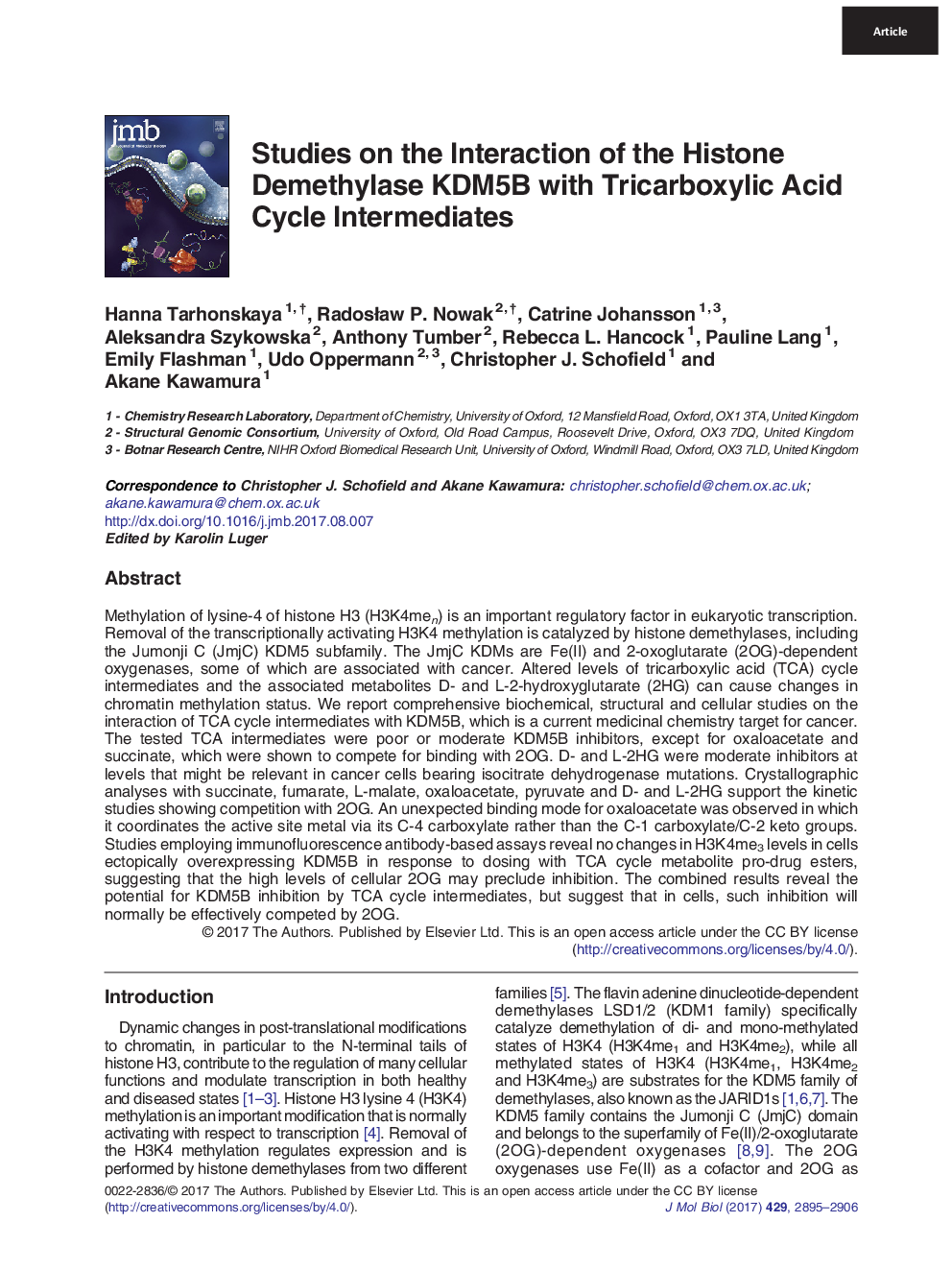| کد مقاله | کد نشریه | سال انتشار | مقاله انگلیسی | نسخه تمام متن |
|---|---|---|---|---|
| 5532836 | 1402081 | 2017 | 12 صفحه PDF | دانلود رایگان |

- The JmjC histone demethylase KDM5B has roles in cell proliferation and tumor maintenance.
- Elevated TCA cycle metabolite levels may promote tumorigenesis by inhibition of JmjC KDMs.
- Crystallographic studies provide evidence for KDM5B interaction with TCA cycle metabolites.
- TCA cycle metabolites can inhibit KDM5B in a 2OG competitive manner.
- Oxaloacetate binds KDM5B chelating the active site metal via its C-4 carboxylate.
Methylation of lysine-4 of histone H3 (H3K4men) is an important regulatory factor in eukaryotic transcription. Removal of the transcriptionally activating H3K4 methylation is catalyzed by histone demethylases, including the Jumonji C (JmjC) KDM5 subfamily. The JmjC KDMs are Fe(II) and 2-oxoglutarate (2OG)-dependent oxygenases, some of which are associated with cancer. Altered levels of tricarboxylic acid (TCA) cycle intermediates and the associated metabolites D- and L-2-hydroxyglutarate (2HG) can cause changes in chromatin methylation status. We report comprehensive biochemical, structural and cellular studies on the interaction of TCA cycle intermediates with KDM5B, which is a current medicinal chemistry target for cancer. The tested TCA intermediates were poor or moderate KDM5B inhibitors, except for oxaloacetate and succinate, which were shown to compete for binding with 2OG. D- and L-2HG were moderate inhibitors at levels that might be relevant in cancer cells bearing isocitrate dehydrogenase mutations. Crystallographic analyses with succinate, fumarate, L-malate, oxaloacetate, pyruvate and D- and L-2HG support the kinetic studies showing competition with 2OG. An unexpected binding mode for oxaloacetate was observed in which it coordinates the active site metal via its C-4 carboxylate rather than the C-1 carboxylate/C-2 keto groups. Studies employing immunofluorescence antibody-based assays reveal no changes in H3K4me3 levels in cells ectopically overexpressing KDM5B in response to dosing with TCA cycle metabolite pro-drug esters, suggesting that the high levels of cellular 2OG may preclude inhibition. The combined results reveal the potential for KDM5B inhibition by TCA cycle intermediates, but suggest that in cells, such inhibition will normally be effectively competed by 2OG.
196
Journal: Journal of Molecular Biology - Volume 429, Issue 19, 15 September 2017, Pages 2895-2906